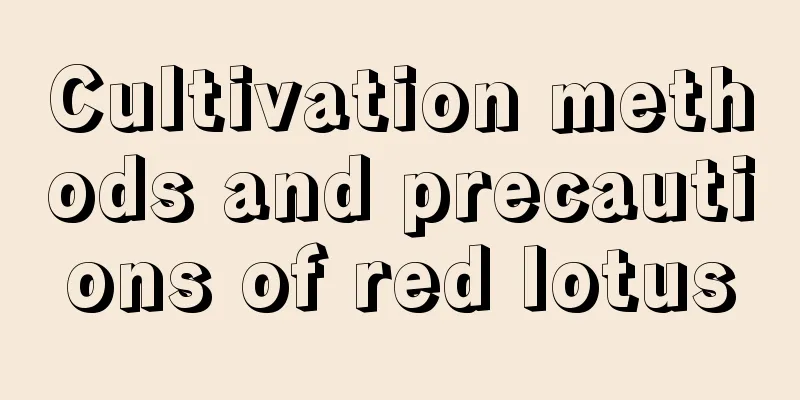How to breed white butterflies

1. Maintenance methods1. Temperature: White butterflies like warmth, which can be adjusted to 20 to 30 degrees. In winter, you can keep it indoors and try to keep it warm, not below ten degrees. 2. Watering: When the growth rate is faster, the demand for water is higher. Therefore, during this stage, it is necessary to replenish water in time to keep the substrate slightly moist at all times. When the growth rate is not so fast, you can water less and it is better to keep the substrate slightly drier. 3. Light: It is a plant that likes light. However, it is also afraid of strong light. Therefore, full sunlight can be provided when the light is not too strong and is relatively mild. In seasons with strong light, you can shade it or place it directly in a hidden, semi-shaded place. 4. Fertilization: Also during its growth period, it needs fertilizer. Generally speaking, once a month is enough. The fertilizer used must be decomposed fertilizer and needs to be diluted before use. 2. Breeding techniques1. Reproduction: It can be propagated by cuttings, which is usually done in spring. Choose strong branches of the current year as cuttings, preferably between eight and twelve centimeters in length. After cutting it, you need to trim it, cut the lower end at forty-five degrees, and then cut off most of the leaves. Use river sand or perlite as the substrate. After insertion, water it thoroughly and then ensure the humidity, preferably between 80 and 90 percent. After ten days or half a month, it will take root. 2. Pruning: First of all, you need to pinch the tops repeatedly during the growth period; once is not enough. In addition, branches that are too dense need to be thinned out. Occasionally dry branches and branches infested with diseases and insects also need to be pruned off. After flowering, the dead branches should also be cut off. 3. Problem diagnosis and treatment1. Diseases: Leaf blight is a common disease that can cause leaves to dry up and fall off. It often occurs in summer when ventilation is poor. You can use carbendazim to prevent and control it, and ventilate the area in time. 2. Pests: "Aphids" and "red spiders" are relatively common and can be controlled by pesticides such as omethoate. IV. Other issues1. Toxicity: It is poisonous and is present in its juice, mainly in the roots, stems, branches and leaves. 2. Can it be raised at home? Although it is poisonous, it is harmless if it is only used for ornamental purposes. Moreover, it is also an ornamental plant. |
<<: How to breed Brazilian iron
Recommend
Can black plum seeds be planted?
Can black plum seeds be planted? Black plum seeds...
Does Phoebe sphenanthera prefer shade or sun?
Does Phoebe sphenanthera prefer shade or sun? Sma...
Should I use a large or small pot for my fortune tree?
Should I use a large or small pot for my fortune ...
How to cultivate and manage Fragrant Wood?
The fragrant wood is an evergreen shrub or small ...
What to do if Milan flowers don't grow leaves
1. Temperature causes 1. Reasons Milan flowers li...
The difference between Schlumbergera and Cactaceae
Differences in plant types There is a big differe...
How to plant multi-flowered wild peony seeds
Soil selection Multi-flowered wild peony is accus...
What soil is suitable for roses?
1. What kind of soil is suitable 1. Breathability...
What to do if the cherry blossom leaves wilt
one. Root necrosis Generally, leaf wilt may be ca...
Cultivation methods and precautions of Luna Lotus
Luna lily is a succulent plant that is half Lycor...
Varieties of Eustoma
Common dwarf varieties Mermaid Series The plants ...
Rose seedling planting video: Rose seedling planting method
Rose seedling planting video Materials for planti...
Can wolfsbane be planted in pots?
Can wolfsbane be planted in pots? Wolfsbane can b...
What are the cultivation methods and precautions of peony?
Peony growth habits Peony belongs to the Paeoniac...
Hawthorn pest control
Hawthorn blossom rot It mainly damages leaves, ne...









